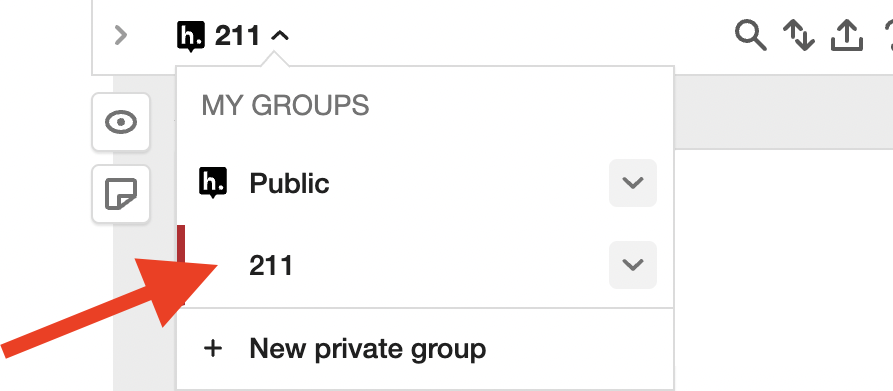Reading 6: Toilets
This assignment is due on Sunday, November 13 at 11:59pm. Don’t bullshit.
When you follow the link above with your browser, you should see Grimmelmann’s article, as well as a button “<” in the upper-right corner. Use the “<” button to expand the annotation sidebar.
You may need to log in to Hypothesis, using the account you created in Reading 1: Who can define the bigger number?.
**Pay attention to this next step**. This is a common mistake that results in many zeros on the assignment. After logging in, you are not done. You still have to expand the drop-down menu “Public” in the top right sidebar, make sure it says “my groups”, and change it to our course group “211”.
 You belong to this group because you used the invite
link in Reading 1: Who can define the bigger number?. If you don’t post to this group, then other students
won’t see your annotations, and you won’t get credit.
You belong to this group because you used the invite
link in Reading 1: Who can define the bigger number?. If you don’t post to this group, then other students
won’t see your annotations, and you won’t get credit.
Here Grimmelmann writes that ….
But I think he doesn’t mean that ….
My evidence is that ….
Here Grimmelmann writes that smart contracts are not ambiguous.
But I think he doesn’t mean that smart contracts are not ambiguous.
My evidence is that the title of the article is “All smart contracts are ambiguous.”
Here Grimmelmann writes that these transactions just transfer resources.
But I think he doesn’t mean that these transactions just transfer resources.
My evidence is that he writes “they can create and execute computer programs.”
Here Grimmelmann writes that the oracle is correct.
But I think he doesn’t mean that the oracle is correct.
My evidence is that he writes “the oracle software has no unmediated access to the truth”.
Make your question clear, descriptive, and specific.
Don’t be too brief, terse, or vague. Don’t just say “What’s this” or “I don’t understand”.
Don’t just summarize.
Exercise 4. Once you have added your annotations, respond to someone else.
Optional: learn more about zero-knowledge proofs, a mainstay of modern cryptography that underpins blockchains and smart contracts.